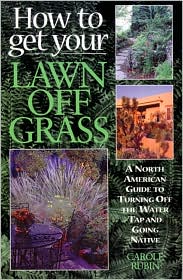Lawns suck! At least if they cover your entire yard, that is. A little bit of turf grass around your estate is OK, I guess. But the disadvantages of growing grass is growing astronomical, and we invite you to watch the video below...it's hilarious!
 |
| Learn more |
According to the National Electronic Injury Surveillance System’s statistics, 663,000 Americans were seen in emergency rooms for injuries sustained while using lawn mowers from 1996 to 2004. This means that approximately two of every 1,000 emergency room visits results from injuries sustained during lawn mower accidents, which amounts to approximately half the number of annual firearm-related injuries.
Here's some more related facts about the dangers of lawn mowers:
- Projectile injury: Mowers can throw debris at high speed. That debris may originate from the environment or from a broken part or component of the mower itself.
- Blade injury: Feet are the most affected body part, as mower blades are backed over or propelled onto feet during use.
- Finger amputation and lacerations of hands: During repair or cleaning of mowers, many hand and finger injuries occur.
- Pollutant inhalation: According to a 2001 study, many mowers emit as much carbon monoxide pollution per hour as a 1992 model automobile does when driven for 650 miles. The EPA is required emissions reduction by at least 35 percent by 2011, because of this high health risk.
- Hearing loss: Mower usage may result in hearing loss due to their significant production of noise. Lawn mowers are typically dirty and noisy.
 |
| Learn more |
Funny thing, though. My Chemlawn neighbors fertilize their grass every year and I don't. Why is it then, that right now their lawns are brown, dead, wastelands, and my front yard is green and full of life? Well, because my yard has grass and a mixture of "weeds" that I used used pesticides to kill. They seem to help the grass live and bear this long drought we've been having. Pesticide usage on American lawns is unbelievable. Suburban lawns and gardens receive more pesticide applications per acre (3.2-9.8 lbs) than agriculture (2.7 lbs per acre on average). In fact, pesticide sales by the chemical industry to farms average $9.3 billion, whereas annual sales to the landscape industry exceed $35 billion.
Not surprisingly, lawns are huge polluters of our streams and rivers. If you have a massive lawn, unbroken by wildlife-friendly spaces, try not to use pesticides. Stop buying "weed killer" and learn to love dandelions...and children. Of 30 commonly used lawn pesticides, 13 are probable or possible carcinogens, 13 are linked with birth defects, 21 with reproductive effects, 15 with neurotoxicity, 26 with liver or kidney damage, 27 are sensitizers and/or irritants, and 11 have the potential to disrupt the endocrine (hormonal) system.
 |
| Learn more |
On top of all this, the pesticides also kill beneficial insects and birds that feed on harmful insects.
Robert Morton, M.Ed., Ed.S believes urban sprawl can be offset by creating wildlife-friendly spaces in America's 25,000,000 lawns, one yard at a time! Click HERE to learn why. A portion of Ad sale revenues will be donated to Monarch Watch. Do you have a wildlife-friendly space? Please share it! Contact us on the secure Bpath Mail Form.
